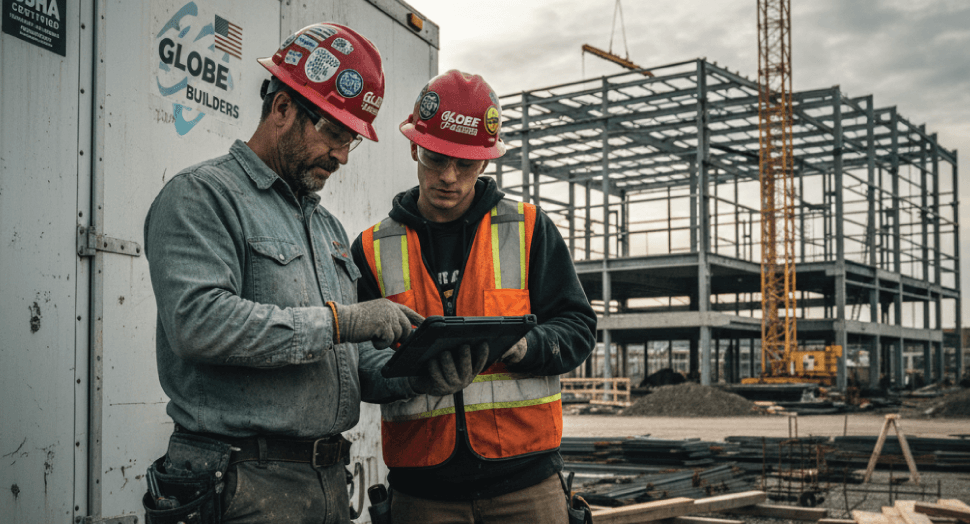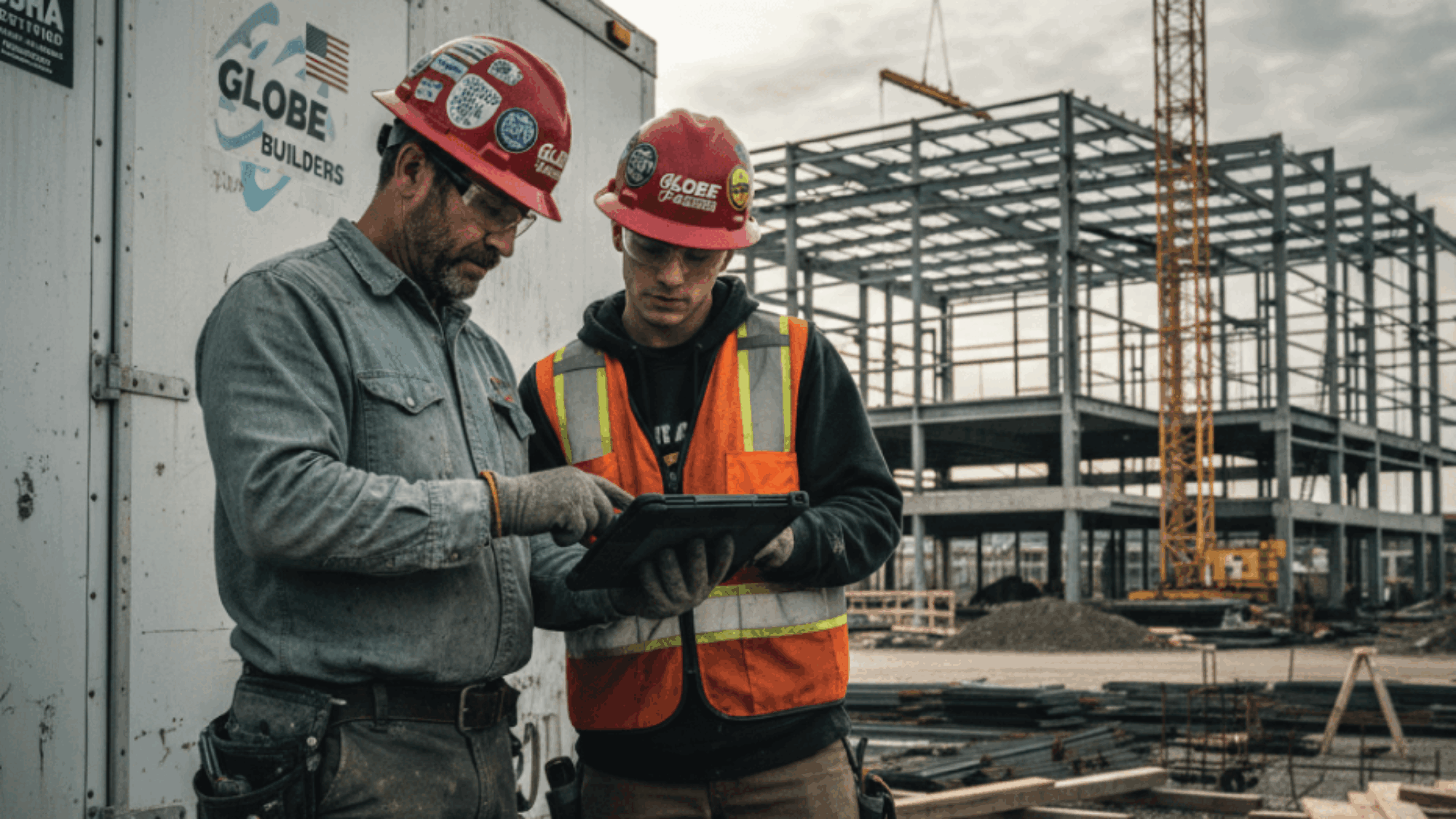
I keep hearing the same concern from construction executives when AI talent management comes up. They worry it will strip away the human connection that makes their industry work.
Most construction leaders I talk to have barely scratched the surface with AI. They’ve used ChatGPT for basic searches or research, then concluded AI means robots replacing people.
But when I show them specific AI applications that actually enhance human connection rather than replace it, something interesting happens. They lean in. They get excited about the possibilities.
Then they hit a wall.
The Execution Paralysis Problem
Construction companies face a perfect storm when trying to implement AI talent solutions. Budget questions, ownership confusion, and competing priorities create complete inaction.
The ownership problem runs deeper than most realize. HR departments think it belongs to IT. IT teams push it back to HR. But there’s often a third player complicating things further.
Third-party software vendors, middle management, department managers, and hiring managers all believe AI talent management falls under their domain. Everyone has an opinion. Nobody wants to own the outcome.
This creates a standoff where promising AI solutions die in committee discussions and budget meetings.
The numbers make the urgency clear. Construction needs 501,000 additional workers in 2024 alone. While companies debate ownership, competitors could gain serious advantages.
The EOS Breakthrough
Companies that break through this paralysis typically use one specific system. The Entrepreneurial Operating System creates accountability structures that eliminate ownership confusion.
EOS assigns duties as “rocks” within leadership meetings. When AI talent management becomes someone’s specific rock, ownership gets established immediately. Everyone stays on track.
The accountability structure transforms organizations from having no unified vision to having carefully designed plans with absolute leadership accountability.
But here’s what surprises most executives about the first 90 days after assigning this rock.
The Definition Phase Discovery
Smart companies don’t jump straight to technology selection. They start by defining what they actually want to accomplish.
This definition phase reveals something unexpected. Construction companies think they want AI to solve mundane tasks like onboarding paperwork, applicant questions, and simple administrative work.
They soon realize they’re trying to solve the wrong problem entirely.
AI excels at creating content that drives company visibility. This gives them more opportunities to become visible to quality candidates.
The real breakthrough comes when companies shift from automating back-end processes to filling the top of their talent funnel with better visibility.
Content Creation as the Game Changer
Construction companies that succeed with AI focus on specific types of content. Thought leadership pieces, project progress updates, and technical data that positions them as the go-to company in their market.
Most construction firms have incredible technical expertise locked in their project managers’ and superintendents’ heads. This knowledge never becomes content that attracts candidates.
AI bridges this gap perfectly.
Internal staff who possess deep technical knowledge can use AI tools to craft compelling content. The AI helps include citations, case studies, research data, and professional presentation that showcases expertise.
Project managers become content creators without learning new skills. Superintendents share insights that demonstrate company capabilities. Technical expertise transforms into candidate-attracting thought leadership.
AI becomes the translator between technical knowledge and compelling content.
The CFO Moment
When construction companies start seeing results from AI-powered content strategies, one specific moment changes everything. Hiring managers report they have a great pipeline of quality candidates.
This is when CFOs finally say the AI investment pays off.
But CFOs need concrete numbers to justify expanding AI talent strategies. The measurable results come through reduced costs that directly impact the bottom line.
Lower recruiting costs, eliminated recruiting fees, reduced job board expenses, and fewer job fair costs create trackable ROI. AI can reduce hiring costs by up to 30% per hire while speeding up the entire process.
These aren’t theoretical savings. They show up in monthly financial reports as line items CFOs can track and measure.
The CFO Moment: ROI from Using AI
Construction companies are coming full circle with AI talent management. They start thinking AI will handle mundane tasks, discover content creation is the real game-changer, then eventually the mundane task automation becomes the next evolution.
HR AI agents represent this next phase. These go far beyond simple chatbots.
Advanced AI agents communicate policies and procedures, handle conflict resolution, send reminders about required paperwork, and guide employees through onboarding processes. They manage comprehensive HR functions without burdening human directors.
The business case is compelling. HR teams currently spend 41% of their time on transactional activities. AI agents handle these same tasks in seconds.
These agents spot patterns in employee surveys, identify burnout signs, help prepare performance reviews, and flag when someone hasn’t updated goals in weeks.
The difference between chatbots and AI agents is simple. Chatbots respond to questions. AI agents get things done.
Implementation Strategy
Construction executives often feel overwhelmed by AI possibilities when they know talent challenges need immediate attention.
The starting point is straightforward. Define three specific needs in your current hiring process. Determine which AI tools best solve those particular needs.
Start with content creation if visibility and candidate pipeline are problems. Move to HRIS platforms with AI capabilities if administrative efficiency matters most. Consider AI agents when employee experience and retention become priorities.
The key is picking one area and executing well rather than trying to solve everything simultaneously.
Company size matters for implementation strategy. Smaller construction firms should focus on content creation tools that require minimal technical setup. Larger companies can handle more complex HRIS integrations and comprehensive AI agent deployments.
Budget considerations align with measurable outcomes. Content creation tools typically require lower upfront investment while delivering visible results quickly. HRIS platforms need larger budgets but create systematic efficiency gains. AI agents represent the highest investment with the most comprehensive returns.
The Competitive Reality
Construction talent shortages continue growing while AI adoption accelerates across the industry. Companies that delay risk losing competitive advantages as skilled workers gravitate toward employers using modern tools and approaches.
The implementation timeline matters more than perfect planning. AI talent solutions improve with use and data collection. Starting with basic applications and expanding based on results works better than waiting for comprehensive strategies.
Construction companies that act now position themselves ahead of competitors still debating ownership and budget questions. The talent crisis won’t wait for perfect AI implementations.
The choice is simple. Start defining specific hiring process needs this week, or watch competitors gain traction with the limited pool of quality construction talent.
AI talent management isn’t about replacing human connection in construction. It’s about using technology to create more opportunities for meaningful human connections with the right candidates.

